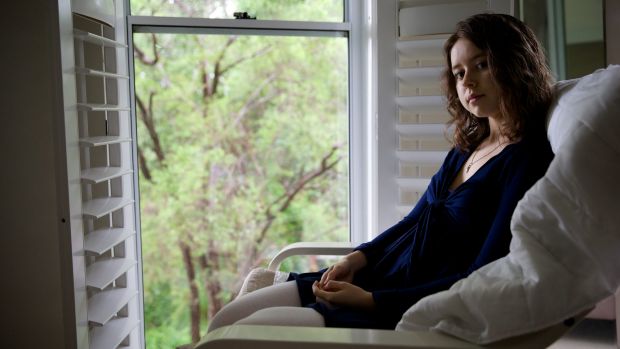
Francesca Wallis, 16, is going to Germany for treatment for symptoms she believes resulted from a tick bite. Photo: Wolter Peeters
The controversy over whether Lyme disease exists in Australia is set to be inflamed by new research that has found no evidence of the bacteria responsible for it around Sydney.
But the new findings have been quickly dismissed as flawed by those who say they have they have contracted the disease from tick bites in Australia.
In July last year a clinical advisory committee on the disease was wound up by Chief Medical Officer Professor Chris Baggoley.
But he said the way forward was to monitor research including that being done by Professor Peter Irwin at Murdoch University and also a team at the University of Sydney.
Professor Irwin told Fairfax Media that in yet-to-be published work, tests on some 300 ticks taken amongst several thousand from the tick hotspot on the North Shore have failed to show any evidence of the Borrelia bacteria linked to Lyme disease in the United States and Europe.
A second study of 84 dogs exposed to 160,000 ticks to produce the antiserum jab used on pets if they get paralysis after a tick bite showed no sign of exposure to the bacteria in Australia he said.
“We have detected Borrelia in European ticks but to date we haven’t found it in Australian ticks,” he said.
The latest twist comes as 16-year-old Francesca Wallis from Lindfield on the North Shore, who was bitten by a tick seven years ago, prepares to travel to a clinic in Germany next month for $40,000 treatment for a catalogue of debilitating symptoms which developed after the bite.
Her parents say her GP believes that following blood tests in the US that Francesca has Lyme disease.
Francesca said: “We just pulled the tick out. I got a big red lump that just got bigger. A few weeks later the tiredness and flu symptoms started,” she said.
“The doctors said it was nothing really and diagnosed me with chronic fatigue syndrome. Even when mum suspected it was Lyme disease they said it couldn’t be because it didn’t exist here.”
She says symptoms include ‘head fog’, vision problems, gut pain, lethargy, tremors, joint pain, poor memory, disorientation, organ and thyroid dysfunction, hormone imbalance and muscle weakness.
She has studied from home since year four because being too weak to go to school full-time. She won a scholarship in performing arts but had to abandon school in year eight.
Her mother Alexandra d’Elia said If doctors had been open to the fact that it might be Lyme disease her daughter could have been cured with a course of antibiotics.
“She could have had her life back seven years ago,” she said. “You feel angry that she has been robbed of most of her childhood because of ignorance basically.”
In addition to the $40,000 German treatment, Francesca’s parents estimate they have already spent $40,000 on medication and tests.
A Westmead Hospital study 20 years could not find conclusive evidence of Borrelia in Australian ticks. This paper influenced investigations into tick borne diseases including Borrelia in Australia. according to University of Sydney Dr Mualla McManus at the Tick Born Disease unit.
Dr McManus who lost her husband Karl McManus in 2010 due to complications of neuroborreliosis following a tick bite, said the jury was still out whether the US Lyme disease bacteria existed in Australian ticks.
She believes with improved laboratory technologies, evidence of Borrelia in Australian ticks will soon be identified. “This infectious disease is complex because when you get a tick bite you are likely to get more than one pathogen, a soup of infectious agents,” she said.
“We need funding so that we can identify the causative agent for Australian Lyme-like illness, which may be a Borrelia, but not necessarily the same bacteria that is in the US. Once its DNA is isolated the barriers to recognition will be removed,” she said.
Sharon Whiteman, President of the Lyme Disease Association of Australia said a multitude of issues including insufficient research and undereducated doctors was stalling the recognition of Lyme disease and Lyme-like illness which she said was the ‘Hidden Epidemic of Australia’.
“This perfect storm of deeply entrenched issues results in a tragedy of suffering and neglect for Lyme patients in Australia,” she said.
But Dr Peter Mayne, who was consulted in Francesca’s treatment and a member of the International Lyme and Associated Diseases Society dismissed the research from Professor Irwin and said he hadn’t used the correct ‘primers’ to identify the bacteria.
“He hasn’t looked well enough and if his results are entirely negative why are so many people positive at several overseas laboratories and also in Sydney,” he said.
“There is no such thing as Lyme-like disease in Australia. We have neurological Lyme disease in Australia, the same as in China and in Europe.”
